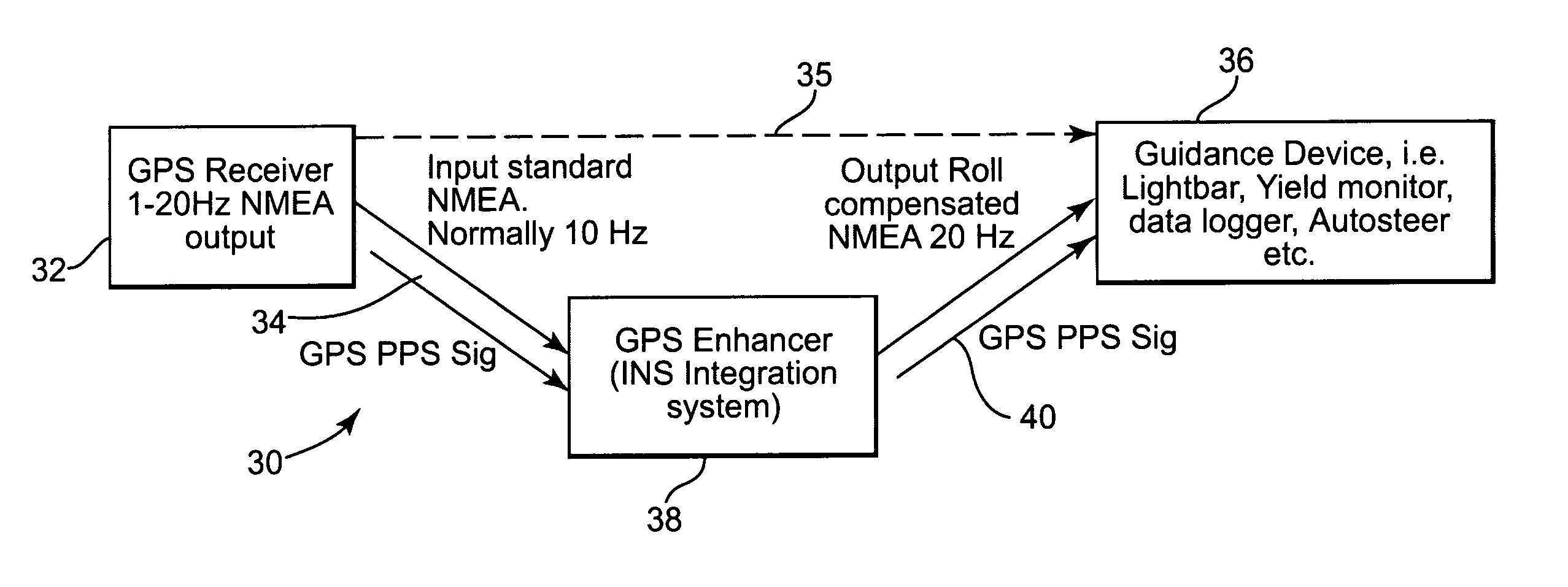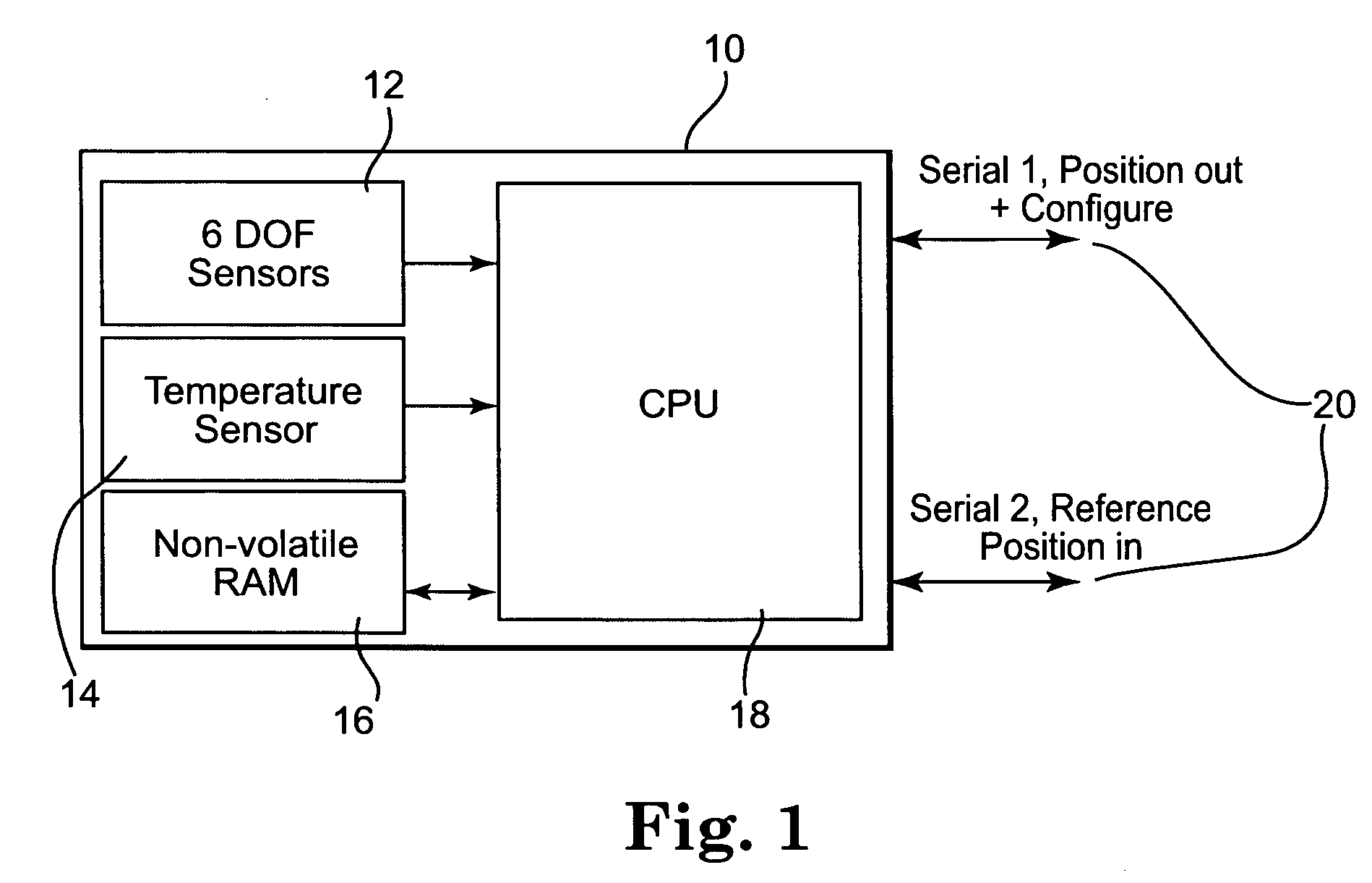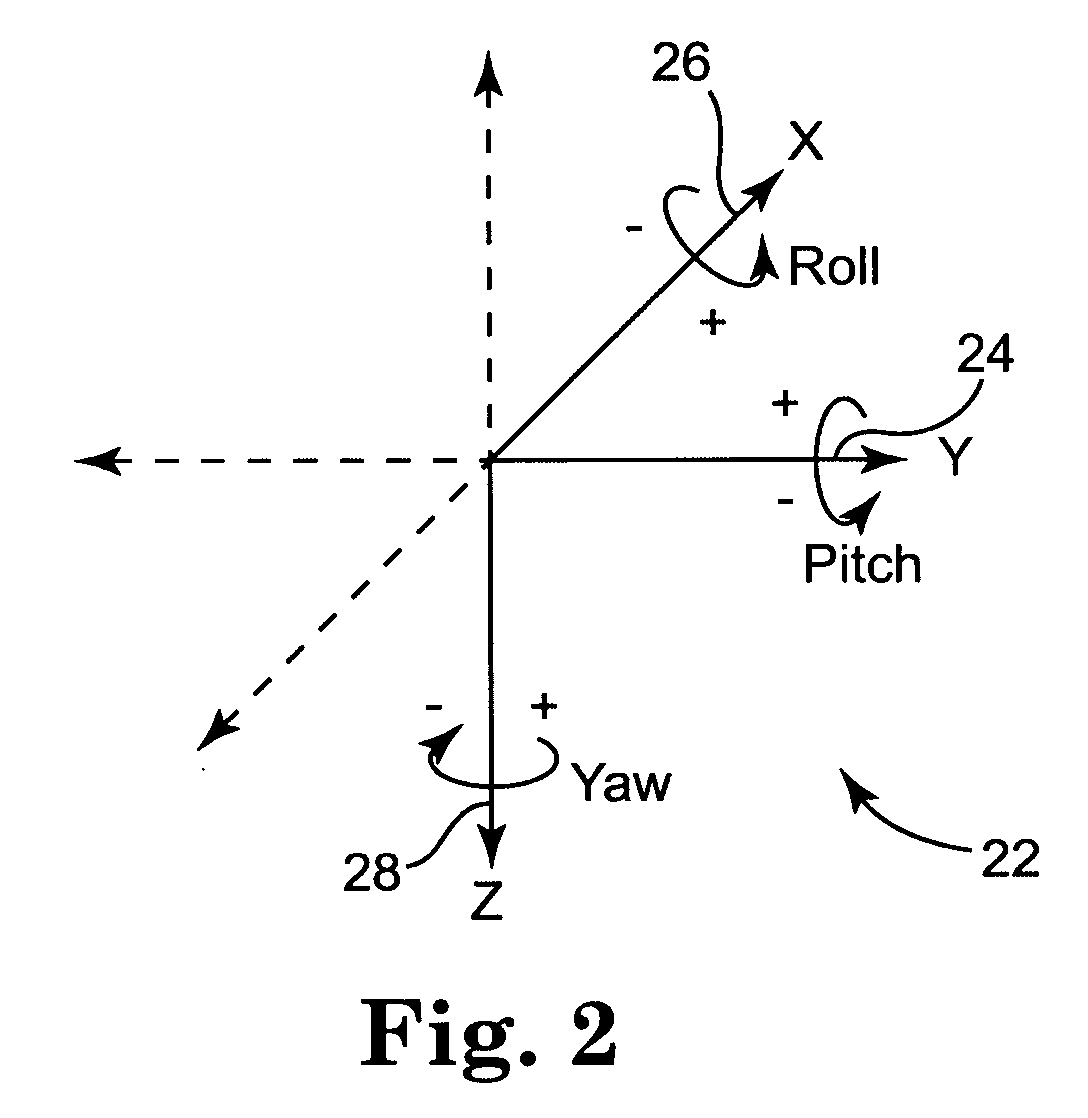Modular high-precision navigation system
a navigation system and module technology, applied in the field of navigation systems, can solve the problems of actual offset error from the intended path, tractor tilt (pitch and/or roll), and inherently limited navigation systems of current global positioning system (gps) based navigation systems, and achieve the effect of increasing the frequency of positional solutions
- Summary
- Abstract
- Description
- Claims
- Application Information
AI Technical Summary
Benefits of technology
Problems solved by technology
Method used
Image
Examples
Embodiment Construction
[0028] With reference to the accompanying figures, there is provided a high-precision inertial navigation module, a high-precision inertial navigation system incorporating the inertial module and associated method.
[0029] With specific reference to FIG. 1, one embodiment of a high-precision inertial navigation module 10 is provided. The module 10 comprises a gyroscope having six sensors 12, including a plurality, preferably three, accelerometers to measure acceleration along three axes (X,Y,Z) and a plurality, preferably three, angular rate sensors for measuring angular rotation around the X,Y, and Z axes. The module 10 further comprises a temperature sensor 14 to compensate and / or calibrate the sensors for performance or response variation due to variation in temperature. The module 10 also comprises non-volatile RAM 16 for storing certain calibration and discipline information for the module 10. A processor 18 is also provided, e.g., a CPU in the illustrated embodiment. The module...
PUM
 Login to View More
Login to View More Abstract
Description
Claims
Application Information
 Login to View More
Login to View More - R&D
- Intellectual Property
- Life Sciences
- Materials
- Tech Scout
- Unparalleled Data Quality
- Higher Quality Content
- 60% Fewer Hallucinations
Browse by: Latest US Patents, China's latest patents, Technical Efficacy Thesaurus, Application Domain, Technology Topic, Popular Technical Reports.
© 2025 PatSnap. All rights reserved.Legal|Privacy policy|Modern Slavery Act Transparency Statement|Sitemap|About US| Contact US: help@patsnap.com



